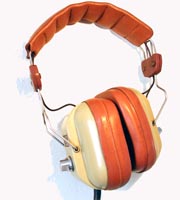|
|||||||||||
Nonverbal CommunicationA Complete Guide
To begin this guide, let's start with a brief (yet important) definition: 
First, you should understand that there are three main classifications that all nonverbal cues can fall under. These divisions are:
2. Body movement 3. Language Now you may be thinking, "What? Language? I thought this article was about 'non-verbal' communication." Yes, you're right and we'll shed light on this paradox a little later on. Time to get down to business... The EnvironmentThe first division concerns the environment. This simply means that the specific surroundings of those individuals engaging in communication will have some type of influence on the process at hand. There environmental classification has two sub-categories. They are:

Proxemics is the manner in which a person utilizes and perceives the physical space surrounding them. In other words, the space (or distance) between the receiver and the sender during communication has an affect on the message's delivery and interpretation processes. Chronemics is the concentration on the element of time. How does time affect communication? There are several ways, including: punctuality, the tempo of which speech is delivered and length of time a person is willing to wait. Body MovementThe second division concerns body movement. This is the typical branch most people think of when they hear "nonverbal communication". There are many different types of cues, which include:
 Kinetics is focus on body movement, facial expressions, and motions.
Kinetics is focus on body movement, facial expressions, and motions. Examples include: wincing, crossing your legs, scratching your head, and frowning. The next focus is on Posture. Posture can project an aura of confidence in a sender or indifference in a receiver. It can also indicate the level of favorability an individual has for another person.
There are five types of gestures:
2. Emblems: movements with direct verbal translations (waving hello/goodbye). 3. Regulators: these control interaction. 4. Illustrators: the acting out of what is being said (motion of throwing a ball). 5. Adaptors: gestures that release bodily tension (exaggerations or twitches.) 
Haptics is our fourth cue which concerns touching. These actions include: handshakes, high fives, kissing, rubbing shoulders and holding hands. Oculesics is the focus on eye contact and movement. Gazing and prolonged eye contact play vital roles in communication - not to mention more technical eye movements like blink rates and pupil dilation. LanguageThe last branch of nonverbal communication that we will be touching on in this article is paralanguage. 
Paralanguage is also known as "vocalics" and involves the cues that are relevant to an individual's voice. The answer: a BIG one. For even more information on nonverbal communication (from specific interpretation examples to giving off the right cues yourself), be sure to check out our other articles on the topic. Get Interactive! What do you think of this article? Leave your comments below on Relationsip-Buddy's: FCUK Fast Comment Updating Kiosk blog comments powered by Disqus
Home | About Us | Our Buddies | Contact Us |
Our site is updated with new articles, ideas, and tips all the time. So check back often!
Meet 3 |
||||||||||

Custom Search
Enjoying This Site?
Then why not use the button below, to add us to your favorite bookmarking service? |
|||||||||||

